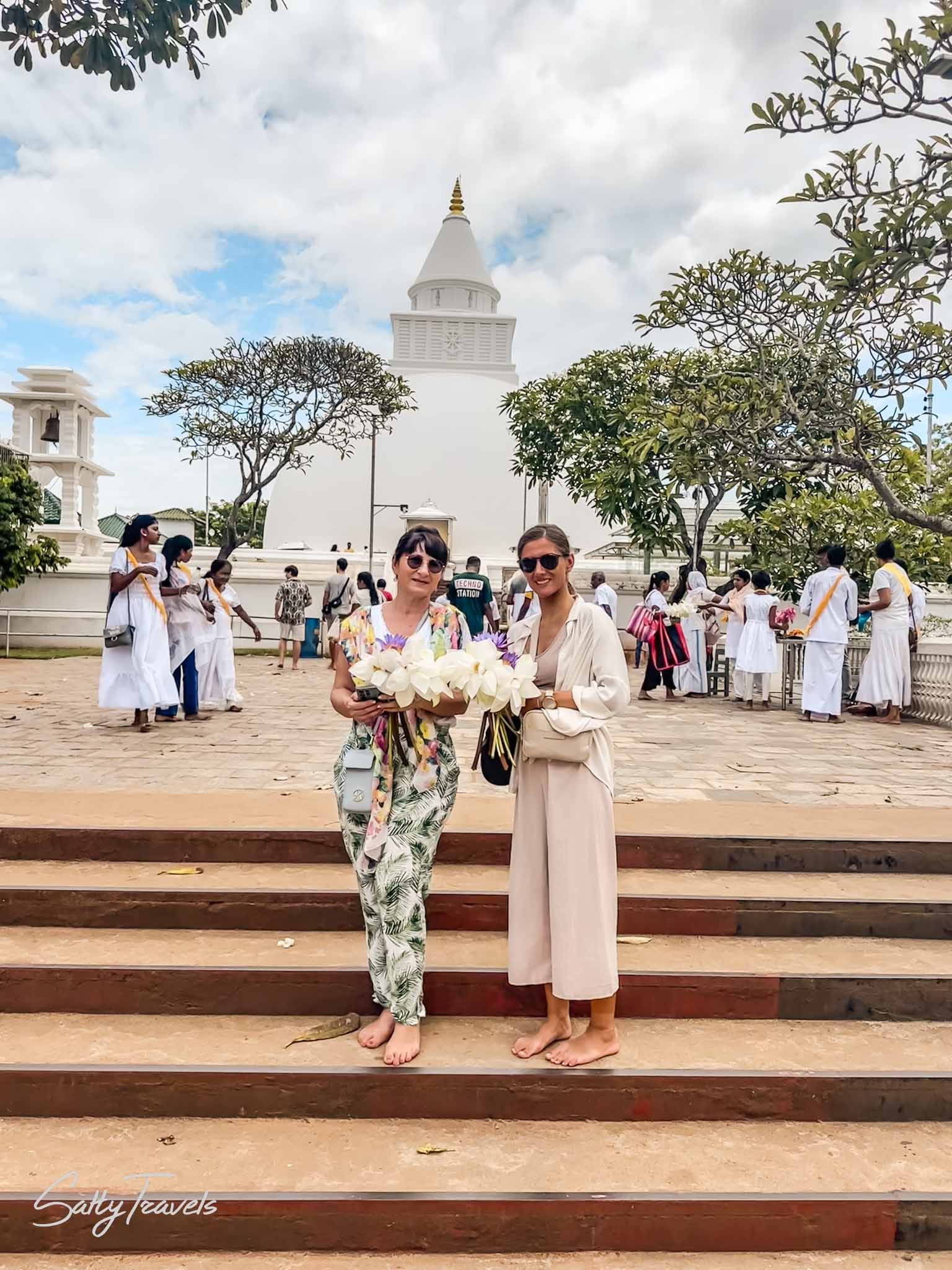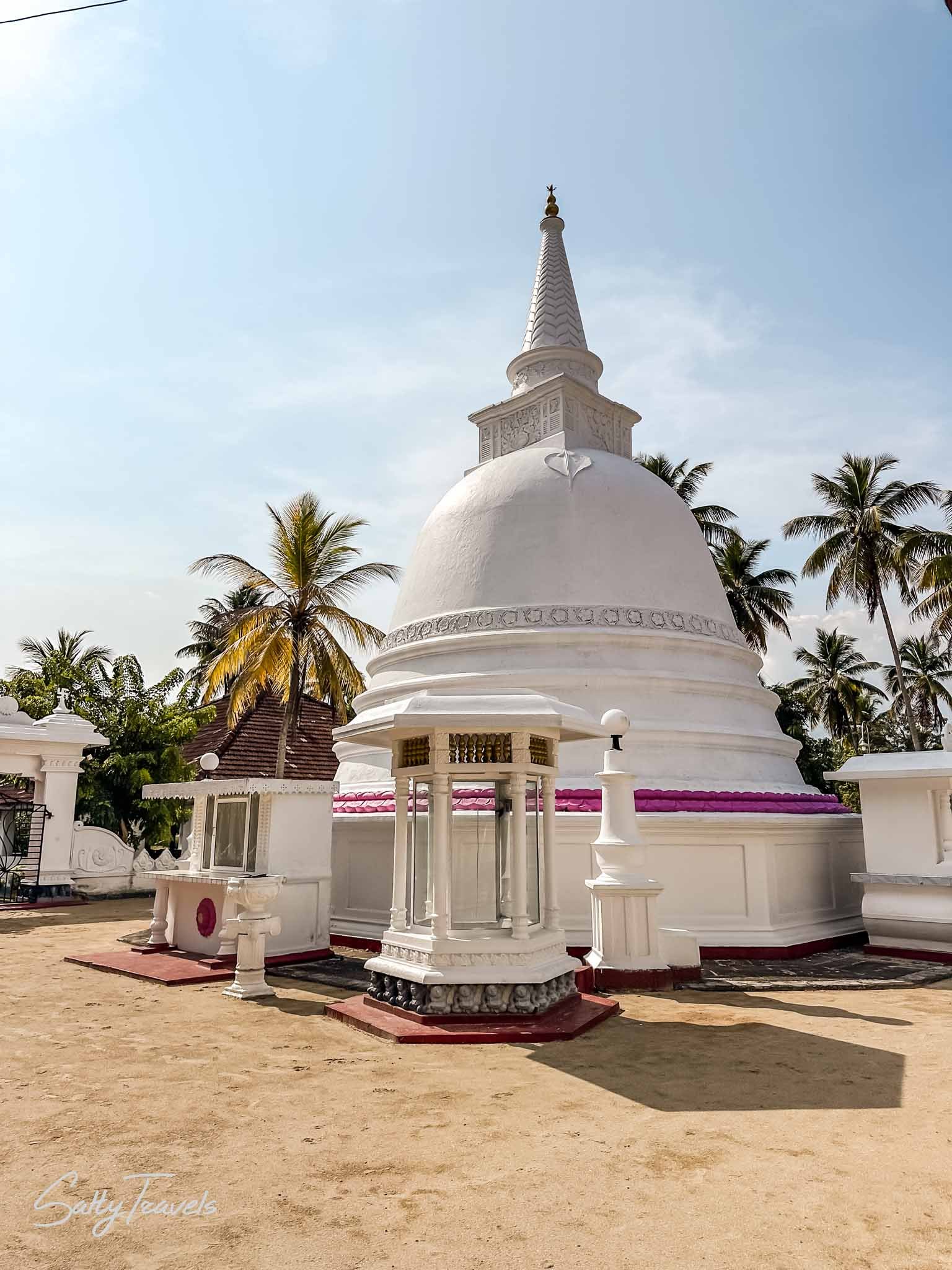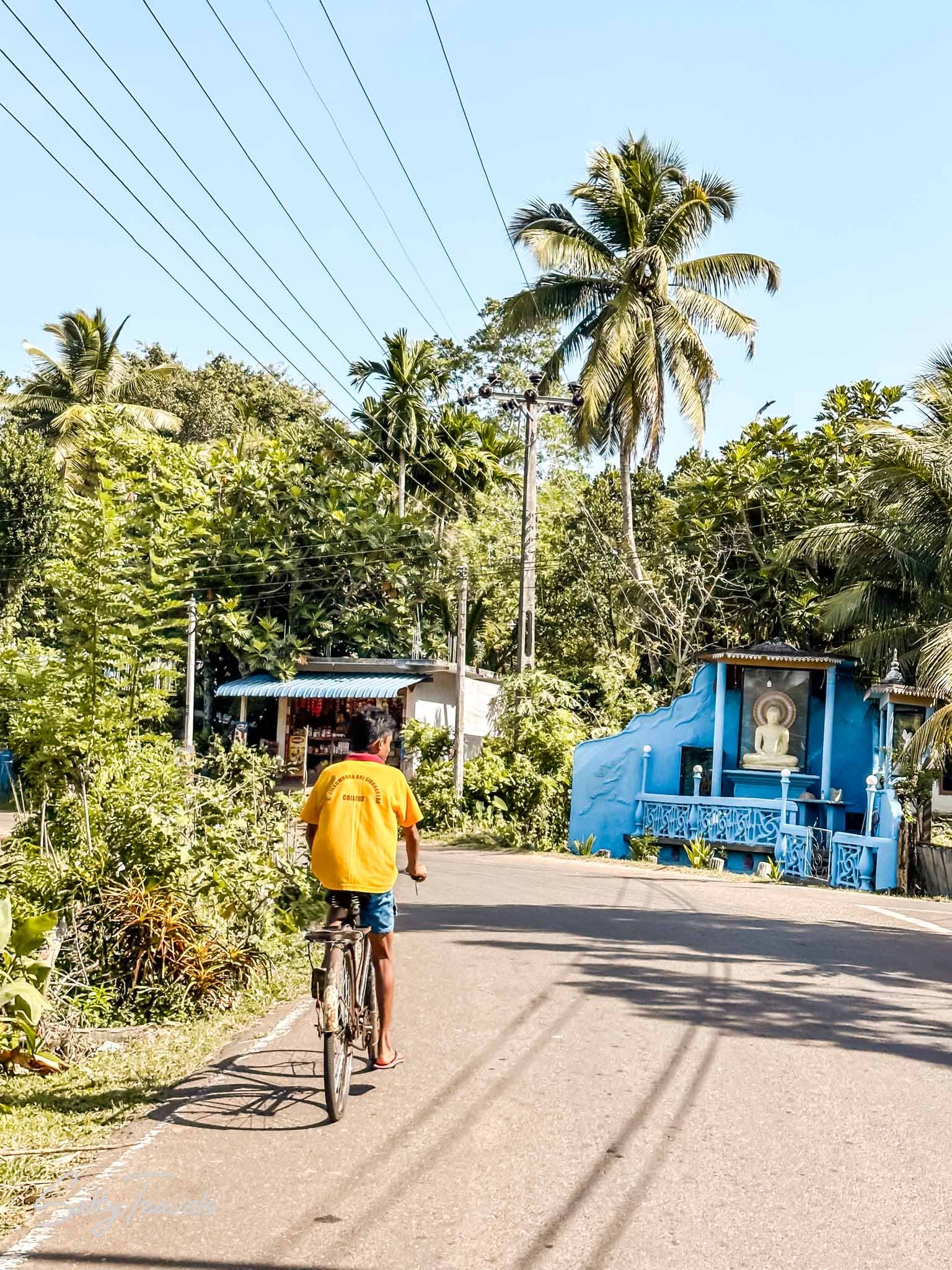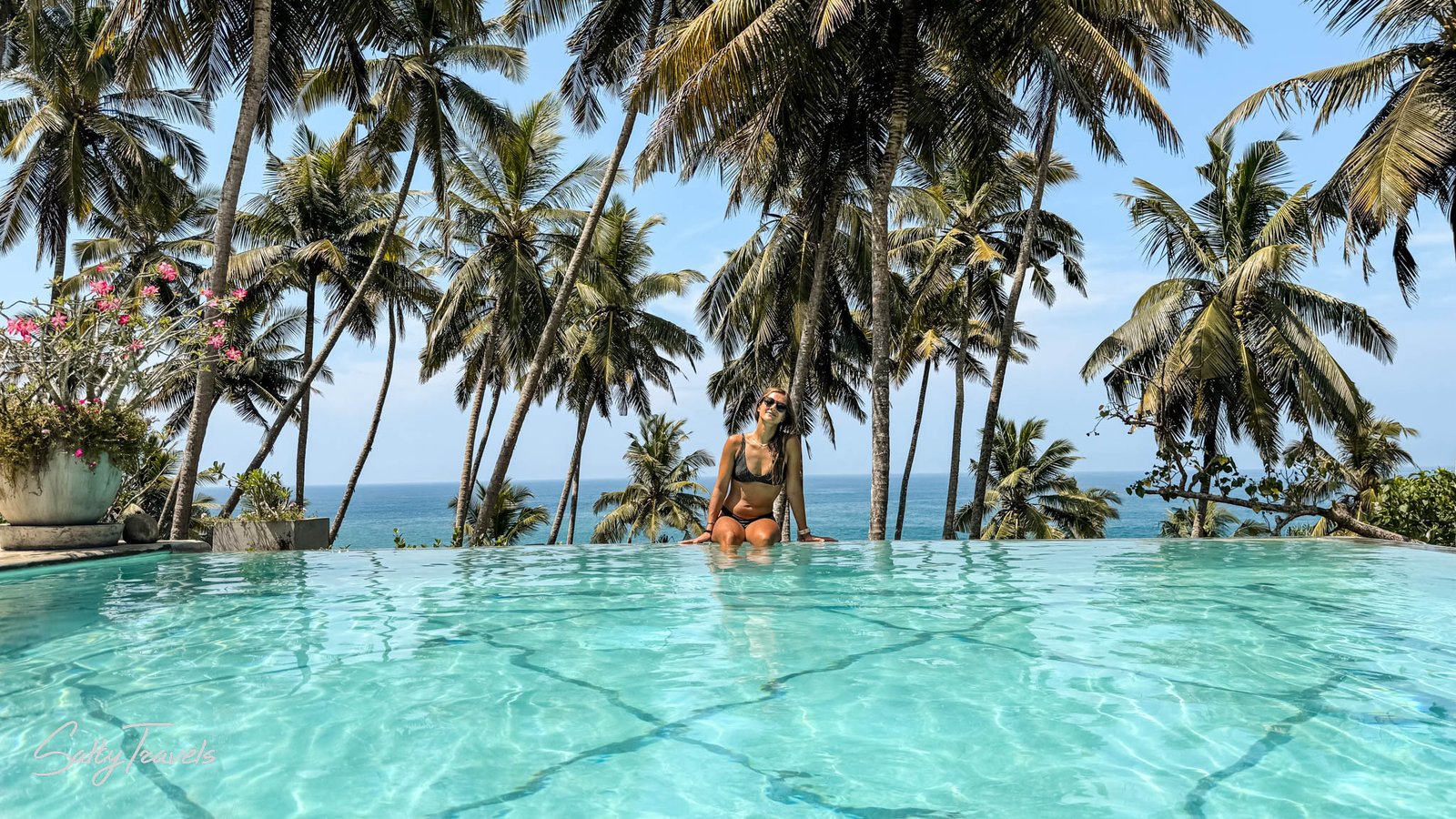Interesting Facts About Sri Lanka You Probably Didn’t Know
When we decided to spend three months in Sri Lanka as digital nomads, we had no idea just how much this island would get under our skin. We based ourselves in Ahangama, in a chill surf town on the south coast, and ended up renting a villa from a local Sri Lankan family. What started as a rental agreement quickly turned into something much more meaningful. They welcomed us like their own, shared meals, stories, and even invited us to celebrate Easter together.
Living side-by-side with them gave us a rare window into daily life in Sri Lanka — one you simply don’t get by ticking off tourist hotspots. To better understand what we were experiencing, we also looked into books and YouTube documentaries about the island’s history, politics, and economy. Over time, we uncovered many interesting facts about Sri Lanka — the kind of insights we believe every traveler and digital nomad should know when visiting the island.
Table of Contents
1. Sri Lanka’s Colonial Past
Sri Lanka has a history stretching back thousands of years. It’s marked by its strategic location along ancient trade routes connecting East and West. The island was colonized by the Portuguese and Dutch before falling under British rule in 1815. This is when it became known as Ceylon.
British colonialism left a lasting mark. From tea plantations and railways to the widespread use of English, which still makes communication easy for travelers today. Sri Lanka finally gained independence in 1948, but the post-independence era was far from smooth. Rising ethnic tensions between the Sinhalese majority and Tamil minority eventually escalated into a civil war.
2. The Civil War That Shaped Modern Sri Lanka
One of the most important — and often overlooked — interesting facts about Sri Lanka is its decades-long ethnic conflict. After independence, deep-rooted tensions between the Sinhalese majority and Tamil minority began to escalate. The Tamil Tigers (LTTE) led a violent armed rebellion demanding an independent Tamil state in the north and east of the country, pointing to systemic discrimination and lack of autonomy as their main reasons.
The Sri Lankan Civil War, which lasted from 1983 to 2009, claimed tens of thousands of lives and caused massive displacement, trauma, and long-term economic damage. Although the war officially ended in 2009, its legacy still influences Sri Lanka’s politics and society today — from military presence in Tamil regions to debates about reconciliation and justice.
If you’re planning to travel around the island, especially in the north and east, it’s helpful to know this background. Not only to understand the country’s recent past, but to approach conversations and regions with empathy and cultural sensitivity.
💡 If you’re curious to dive deeper into this complex and painful chapter of the country’s history, I highly recommend reading This Divided Island by Samanth Subramanian. It’s a beautifully written and eye-opening book that helped me understand the emotional and political layers of the conflict. You can also check out the YouTube documentary The Sri Lankan Civil War. It will give you a clear and visual overview of what happened and why it still matters.
3. The Lasting Impact of Sri Lanka’s Economic Crisis
Another one of those interesting facts about Sri Lanka is just how much the country has struggled economically in recent years — and how visible the consequences are even in touristy areas.
Sri Lanka has faced a series of political, economic, and natural crises in the 21st century, making long-term stability a serious challenge. Here’s a quick overview of the major events that shaped its recent history:
- Civil War (Until 2009) – The decades-long war left deep scars on infrastructure, communities, and national unity.
- 2004 Tsunami – One of the deadliest natural disasters in recorded history, killing over 35,000 people and displacing millions.
- Easter Bombings (2019) – A series of coordinated terrorist attacks targeting churches and hotels, which devastated tourism and shook national security.
- Economic Crisis (2022–Present) – Triggered by poor governance, rising debt, and a sudden ban on chemical fertilizers that caused agricultural collapse. Add the COVID-19 pandemic, which wiped out tourism revenue, and Sri Lanka was pushed into one of the worst financial crises in its history.
At the peak of the 2022 crisis, the country faced fuel shortages, power cuts, sky-high inflation, and mass protests that led to leadership changes. For locals, prices of basic goods doubled or tripled between 2020 and 2023. While the situation has somewhat stabilized thanks to international aid and reforms, the cost of living remains painfully high for many Sri Lankans — despite the rapid growth of tourism.
💡 If you want to understand the roots of this crisis, I recommend watching the YouTube video How a Family Allegedly “Ruined” Sri Lanka’s Economy – The Big Steal. It’s a great crash course on corruption, mismanagement, and the consequences of political power concentrated in the wrong hands.
4. Religion in Sri Lanka: A Unique Spiritual Blend
Religion
One of the most interesting facts about Sri Lanka is just how deeply religion is woven into everyday life — and how harmoniously different traditions often coexist. About 70% of the population is Buddhist. But you’ll also find Hinduism (12.6%), Islam (9.7%), and Christianity (7.6%) practiced across the island. What makes it fascinating is how these religions don’t just live side by side — they often overlap in unexpected ways.
We were honestly surprised (in a good way) by how fluid religious identity can be here. For example, a Sri Lankan friend of ours goes to a Buddhist monastery, prays to the Hindu god Ganesha, and celebrates Christmas and Easter with her Christian husband — and that’s not unusual. In Europe, we’re used to strict lines between religions, but in Sri Lanka, it’s often more about blending than dividing.
Astrology
Another thing that stands out is the role of astrology. It influences everything from wedding dates and naming babies to business launches and even national elections. Many locals won’t make major life decisions without consulting an astrologer.
Sacred sites and Poya days
You’ll also notice the spiritual vibe at sacred sites like Adam’s Peak or the Temple of the Tooth in Kandy. These are places that attract both devoted pilgrims and curious travelers. And then there are Poya Days — monthly Buddhist full moon holidays when alcohol sales are banned and many shops close. It’s worth checking the calendar if you’re planning a night out or a long drive.
So if you’re visiting Sri Lanka, it’s not just about sightseeing — it’s a chance to observe (or even join in) spiritual rituals and celebrations that have been around for centuries. Just make sure to do it respectfully. Cover your shoulders and knees at temples, take off your shoes, and approach everything with an open heart.
5. Sri Lankan Culture: Family, Food, and Festivals
Sri Lankan culture is colorful, warm, and deeply rooted in tradition. And here’s one of the most interesting facts about Sri Lanka: life here revolves around family, hospitality, and community more than individualism.
Family comes first
Family plays a central role in Sri Lankan life. Most decisions, big or small, are made together. It’s not unusual to live with your parents well into adulthood, and people often prefer to do business with family if possible. There’s also a strong culture of respecting elders, which shows up in how people speak, behave, and even sit at the table. If you’re coming from a more individualistic culture, it can feel surprisingly different — but also very grounding.
A blend of cultures
Sri Lankan culture is shaped by Sinhalese, Tamil, and colonial influences, creating a unique mix that shows up everywhere — in food, festivals, architecture, and even languages. You might hear Buddhist chanting in the morning, Tamil music blasting from a tuk-tuk in the afternoon, and end the day sipping tea on a colonial-style veranda. Temples sit next to churches and mosques, and street food stalls sell both dosa (a Tamil favorite) and deep-fried snacks brought in during British times.
This blend makes the island feel layered and full of contrasts — and that’s part of what makes traveling here so exciting.
Celebrations everywhere
If you’re lucky to be around during a festival, don’t miss it. Celebrations like Vesak (Buddhist festival of lights), Sinhala and Tamil New Year, and Deepavali light up the streets with music, dancing, food, and joy. We celebrated the Sinhala New Year with our neighbors — it was one of the most heartwarming experiences of our trip.
Let’s talk about food
Sri Lankan food is full of flavor — and heat! You’ll come across dishes like rice and curry, hoppers, and kottu roti. In local places, asking for “not spicy” often still means spicy. Also, don’t be surprised if people eat with their hands — it’s completely normal and part of the experience. Just remember: right hand only.
⚡️ If you are planning to visit Ahangama, check out my favorite food places: Best Restaurants in Ahangama – Local Favourites and Secret Spots You’ll Love
Tea is everywhere
Ceylon tea is one of the most iconic exports of Sri Lanka, and it’s everywhere — not just in touristy tea plantations. Introduced during British colonial rule, tea became a major part of the economy and daily life. Today, Sri Lanka is one of the world’s top tea producers, and locals drink it morning, noon, and night.
You’ll often be offered a cup of strong black tea when visiting someone’s home, after a meal, or even while waiting for a haircut. It’s usually served with lots of sugar and sometimes milk — especially in Tamil areas. There are also roadside tea stalls (called “kade”) where people gather to chat, snack, and take a break from the heat.
It’s more than just a drink — it’s a daily ritual and a symbol of hospitality.
6. How Foreigners Are Perceived in Sri Lanka
One of the less obvious but important facts about Sri Lanka is how locals might see you as a foreigner. People are usually warm, curious, and welcoming. But there’s often an assumption that foreigners are wealthy, simply because they can afford to travel to Sri Lanka.
Most Sri Lankans have never left the island. So just the fact that you bought a plane ticket puts you in a different category. Even if you’re on a tight budget, many locals will still see you as rich. And that can affect how they interact with you.
You might get offered help more often, be treated with extra respect, or be quoted a higher price. It’s rarely done with bad intentions — just shaped by experience and perception.
At the same time, you’re often outside of the local social structure. This means you’re not expected to follow all the same rules. That gives you freedom but also creates a bit of distance.
Being aware of this dynamic helps you connect more genuinely and respectfully — especially if you’re staying a while or building relationships locally.
7. Etiquette Tips for Digital Nomads in Sri Lanka
If you’re planning to stay in Sri Lanka for a while, it’s good to know a few cultural etiquette basics. These small things can make a big difference in how locals respond to you. And they’ll help you connect more genuinely with people around you.
- Dress modestly when visiting temples or rural areas. No shorts or sleeveless tops. In beach towns, bikinis are fine — but only on the beach. Not while shopping or riding your scooter through town.
- Always remove your shoes and hat before entering temples and local homes.
- Avoid touching anyone’s head, including children. In Buddhist culture, the head is considered the most sacred part of the body.
- Use your right hand for eating, passing money, or giving something to someone. The left is associated with hygiene.
- Personal space is smaller than in many Western countries. Don’t be surprised if people stand closer than you’re used to during a conversation.
- Avoid public confrontations. Sri Lankans tend to value harmony and politeness. If things do get heated, emotions may rise quickly — so staying calm and respectful helps a lot.
8. Language in Sri Lanka
One of the most convenient and interesting facts about Sri Lanka is how widely English is spoken. This is the case especially in cities, tourist areas, and among educated locals. It’s a leftover from British colonial times, and it makes life much easier for travelers and digital nomads. You’ll have no trouble ordering food, asking for directions, or chatting with people. Especially if you make a little effort to learn a few phrases from the local languages.
The two official languages of the country are Sinhala and Tamil:
- Sinhala is spoken mostly in the south, west, and central parts of the island.
- Tamil is common in the north and east, and also among Tamil communities in major cities.
Here are a few Sinhala and Tamil phrases we used the most:
- Hello – Ayubowan (Sinhala) / Vanakkam (Tamil)
- Thank you – Isthuthi (Sinhala) / Nandri (Tamil)
- Yes – Ow (Sinhala) / Aamaam (Tamil)
- No – Naa (Sinhala) / Illai (Tamil)
- How much? – Meeka keeyada? (Sinhala) / Idhu evvalavu? (Tamil)
Try using them — even if you mess up a little, locals will love it. It can spark a smile, start a conversation, or even get you a better price at a market.
Final Thoughts: Interesting Facts About Sri Lanka
If you want to truly connect with locals and see more than just the tourist side of Sri Lanka, learning a few interesting facts about the country can really enrich your trip. Our stay was unforgettable — mainly because of how close we got with our host family. We shared meals, stories, traditions, and laughs we’ll never forget.
These kinds of experiences are rare and incredibly meaningful. And the more you understand about Sri Lanka, the easier it becomes to build real connections.









